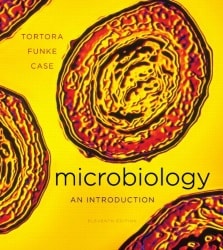The degree of pathogenicity
Virulence
What are the three portals of entry for pathogens?
Mucous membranes, the skin, and the parenteral route.
What is the easiest and most frequently traveled portal of entry for infectious microorganisms?
Mucous membranes.
What mucous membranes can bacteria and viruses use to enter the body?
Respiratory tract, gastrointestinal tract, genitourinary tract, conjunctiva.
Most enter through the mucous membranes of which tracts?
Gastrointestinal and respiratory.
How do microorganisms gain access to the gastrointestinal tract?
In food and water and via contaminated fingers.
T or F: Most microbes that enter the body in these ways are destroyed by hydrochloric acid and enzymes in the stomach or by bile and enzymes in the small intestines.
True.
The genitourinary tract is the portal of entry for which types of pathogens?
Those contracted sexually.
T or F: If a pathogen gains entry into the body by another portal of entry than is preferred, they may not cause disease.
True.
T or F: The number of microbes invading the body may determine whether they cause disease.
True; if only a small number of microbes enter the body, they will probably be overcome by the host's defenses.
The virulence of a microbe is often expressed as
the ID50 or the infectious dose for 50% of the sample population.
The potency of a toxin is often expressed as the
LD50 or the lethal dose for 50% of a sample population.
How do pathogens attach to the host?
Via adhesions or ligands that bind specifically to certain receptors.
Where are adhesions located?
On a microbe's glycocalyx or on other microbial surface structures, such as pili, fimbriae, and flagella.
The ability for microbes to come together in masses, cling to surfaces, and take in and share available nutrients is called what?
An example is dental plaque.
Biofilms.
The ability for a pathogen to alter its surface antigens.
Antigenic variation
How do some pathogens obtain iron?
By secreting proteins called siderophores.
How do siderophores work?
They are released into the medium, where they take the iron away from iron-transport proteins by binding the iron even more tightly.
Produced inside some bacteria as part of their growth and metabolism and are secreted by the bacterium into the surrounding medium or released following lysis.
Exotoxins
T or F: Bacteria that produce exotoxins may be gram-positive or gram-negative.
True.
What are toxoids?
Inactivated exotoxins used in vaccines.
Antibodies against specific exotoxins are called
Antitoxins
How do exotoxins work?
They destroy particular parts of the host's cells or by inhibiting certain metabolic functions.
T or F: Exotoxins are disease specific.
True. This means exotoxins produce the signs and symptoms of diseases, not the bacteria itself.
What are the three types of exotoxins?
A-B toxins, membrane-disrupting toxins, and superantigens.
Most exotoxins are what type?
A-B toxins
What does A-B toxin mean?
It means there are two parts. Part A is made up of an active (enzyme) component and Part B is the binding component.
How does membrane-disrupting toxins contribute to virulence?
They kill host cells, especially phagocytes, and by aiding the escape of bacteria from sacs within phagocytes into the host cell's cytoplasm.
What does membrane-disrupting toxins cause?
Lysis of the host cell.
Membrane-disrupting toxins that kill phagocytic leukocytes are called
Leukocidins
Toxins that kill erythrocytes (red blood cells) by forming protein channels are called
Hemolysins.
Hemolysins produced by streptococci are called
Streptolysins
Antigens that provoke a very intense immune response due to the release of cytokines from host cells (T cells)
Superantigens
Some gram-negative bacteria produce toxins which damage DNA, such as mutations, disrupting cell divisions, and leading to cancer, called
Genotoxins
What are some examples of exotoxins?
A-B Toxin: Botulism, Diphtheria, Anthrax, Tetanus
Membrane-Disrupting: Gas gangrene and food poisoning, antibiotic-associated diarrhea
Superantigen: Food poisoning, Toxic shock syndrome
Genotoxin: Stomach cancer
Where are endotoxins located?
Within the bacterial cell on the LPS portion of gram-negative bacteria.
The lipid portion of LPS is called
Lipid A
Endotoxins are _______, whereas exotoxins are ________.
Lipopolysaccharides, proteins
When are endotoxins released?
During bacterial multiplication and when gram-negative bacteria die.
What signs and symptoms do endotoxins produce and how are they different from exotoxins?
Chills, fever, weakness, generalized aches, and in some cases, shock and even death.
They are different because endotoxins produce the same signs and symptoms, with varying degree, regardless of the species of microorganism. Exotoxins are specific for a particular cell structure.
A consequence of endotoxins is the activation of blood clotting proteins, causing the formation of small blood clots, known as
disseminated intravascular coagulation.
Which toxin comes from mostly gram-positive bacteria?
Exotoxins.
Endotoxins come from what kind of bacteria?
Gram-negative.
Which toxin has a higher heat stability?
Endotoxins, which can withstand autoclaving (121C for 1
hour)
Exotoxins are unstable, with the exception of
staphylococcal enterotoxin.
Which toxin has a low ability to cause disease?
Endotoxins, whereas exotoxins are high.
Do exotoxins produce fevers?
No.
Are endotoxins easily neutralized by antibodies?
No, therefore, effective toxoids cannot be made to immunize against toxin.
An outcome of lysogeny that changes the characteristics of a microbe due to the incorporation of a prophage is called
Lysogenic conversion
What is a result of lysogenic conversion?
The bacterial cell is immune to infection by the same type of phage.
The visible effects of viral infection on a cell are known as
cytopathic effects.
